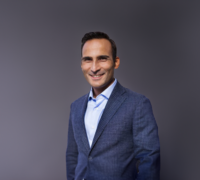Curiosity and courage
Condosta is Group Head of Social Progress and Sustainability Capability Building with the electrification and automation technology giant, ABB. His trajectory has been anything but linear. In his 15-year tenure with the organization, he’s held leadership roles in finance before pivoting to HR in 2024 with a special focus on ESG reporting via a stint as Group Head of the ABB LGBTQ+ project in 2020 – a role that overlapped with his position as Group Finance Record to Report Process Owner.
These are significant career switches, mobilized in part by a desire to add value in new ways, and partly by “innate curiosity,” he says.
“I’m driven by the impact I can make. In every role, there comes a moment when I know I’ve delivered real change, understood the challenges, and it’s time to seek the next opportunity to create value elsewhere. That drive is deeply connected to my curiosity and passion for problem-solving – a constant thread throughout my career, from my early days in programming to today. There’s that need to take problems and dismantle them that is fed by curiosity.”
There’s also a generational component, Condosta believes. Gens Y and Z are less shackled to the social prestige or even the financial remuneration that comes with traditional linear progression through the ranks, he says, and are more interested in having the freedom to explore different aspects of work. This is something he sees reflected in many interviews done for global roles and in the attitudes of the teams he has managed.
“Up and coming leaders understand that there’s a trade-off between responsibility and freedom, and freedom is a real motivating factor in younger generations: it’s about having that space in your career to experiment and try completely different things to find what you like, and where you can create new value.”
From the individual’s perspective, this can be challenging, says Condosta. Making the kinds of shifts he has enacted over his own career has meant overcoming different roadblocks, some cultural, others relational. Sometimes, you may need to convince line managers and colleagues of your capabilities and “authenticity” when switching into concurrent or new roles, he says. Then there’s imposter syndrome.
“It’s not easy. If you want to do different things with your career, you need to be ready to prove to your stakeholders that you have what it takes to succeed; that might mean giving 110% in your current role and 120% in the role you’re stepping into. There’s a line about ‘being so damned good at what you do, no one can put you down,’ and I think there’s real truth in that. And you’ve got to have the courage to believe in yourself and overcome self-doubt, especially if you’re making these opportunities for yourself.”
Making opportunities has entailed making the powerful business case for change, he adds, from “educating” line managers on the potential value of these career switches, to accepting full responsibility in the event they fail. He’s also had to win the trust and respect of new colleagues with each functional pivot.






